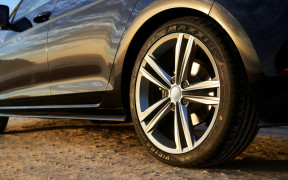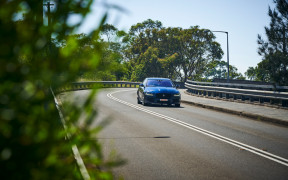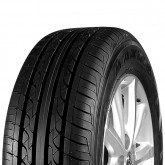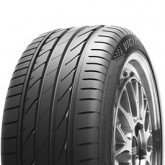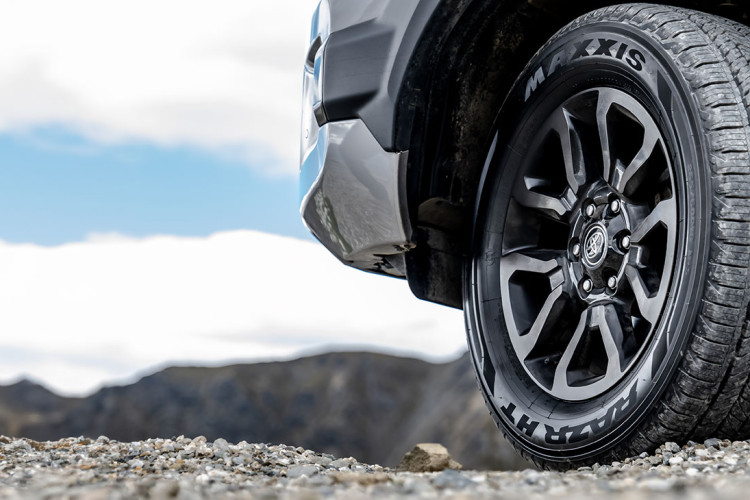

Your Guide to Car Tyres
In just under 150 years the automobile has changed everything. Where once you rarely ventured beyond village borders, today we think nothing of driving for a few hours to see a friend. Unlike other mechanical inventions, our bond with cars runs deep. They provide adventure, take us to the the big game, the picnic, the wedding… the list goes on. They are part of special memories and moments, part of the backdrop to our lives. And to keep your metal mate performing, the single biggest change you can make is to throw on some new tyres. But which tyres?
A Nod to Tyre Innovation
The story of the humble tyre spans continents and the inside of many courtrooms filled with patent lawyers and inventors trying to protect their creations. It started in earnest in the late 1800’s, as the benefits of rubber became apparent and its use became widespread. Throw in a garden hose and an inquisitive yet practical mind, along with the need to make a child's bike more comfortable and you get the first pneumatic tyre. Then in 1904, Continental came along and added the first tread pattern to a tyre. For cars increasing in speed it was a welcome invention. Indeed, as roads surfaces changed and automobiles became faster and more complex, the demand for tyre invention grew. From the early combination tyres invented by Phillip Strauss (the 1st commercially successful tyres) to radial tyres courtesy of Pierre Marcel Boudan in 1946, they’ve kept on… moving.
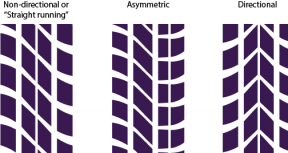
Modern Car Tyre Tread
Could you tell what type of tyre it is from the tread pattern? There’s 3 basic types of tread pattern and each offers something a little different.
Non-Directional Tyres
A little older in style, they have the same tread on both sides of the tyre. This makes it nice and easy for rotating them and they perform pretty well in all areas. Think of them as a solid all-round performer that’s generally good value for money.
Directional Tyres
A step up in terms of performance, directional tyres have a specified direction so you need to be careful when fitting them. The trade off for this little bit of added complexity is better performance with improved traction in the wet, as they disperse water away better than directional tyres. Their drawback? They can run a little noisier than directional tyres.
Asymmetric Tyres
Exactly what you’d think. The pattern is different from one side to the other. This allows them to provide the necessary grip yet also reduce the noise (thanks to their tread design directly noise away from the cabin). It makes for an ideal mix and most new cars come with asymmetric tyres fitted for a reason. Indeed, high performance manufacturers like Continental make pretty much only asymmetric tyres these days.
Interesting Car Facts
- There is 1 car to every 7 people on the planet.
- Lamborghini, Porsche, Audi, Bentley, Bugatti, Seat and Skoda...are all owned by VW.
- Most car horns beep in the key of ‘F’.
- The largest speeding ticket ever issued was for $1,000,000. In Sweden, the fine is proportionate to your income. And that's the price if you earn heaps and get clocked at 180mph.
- Residents of Churchill in Canada leave their cars unlocked so you can hide from a Polar Bear should you need to.
- Ralph Teetor invented Cruise Control. He wouldn’t have used it much himself though as he was totally blind.
- The average car is made up of around 30,000 parts.
- The average car in New Zealand is 14 years old.
- The Honda Accord is the most commonly stolen car in the US.
Car Tyres We Recommend
Maxxis MA-P3
Maxxis' all-rounder highway tyre. If your daily drive involves corners or wet braking, the MA-P3 won't let you down. Recommended by Consumer NZ (test size 175/65R14). Tough and long lasting.
Available in a range of sizes and prices
$167-335
Find out moreMaxxis VS5 Victra
A touch of European class from Maxxis. Developed for the driver who values a refined highway experience and seriously capable handling, this tyre is at its best in smooth highway applications.
Available in a range of sizes and prices
$340-495
Find out moreTips and articles


Understand the link between traction and compaction

